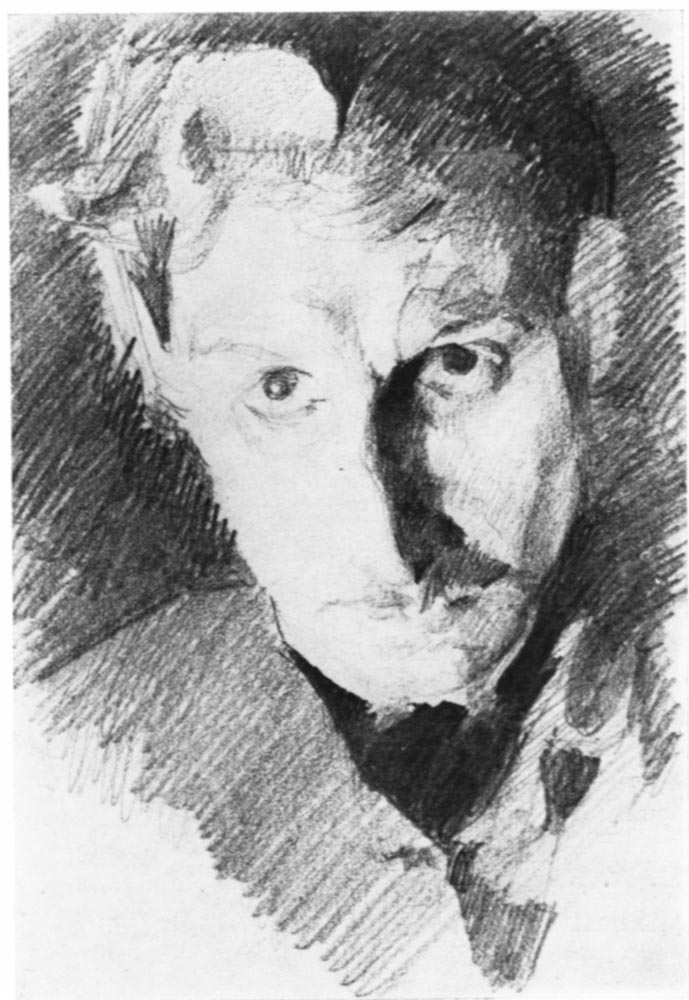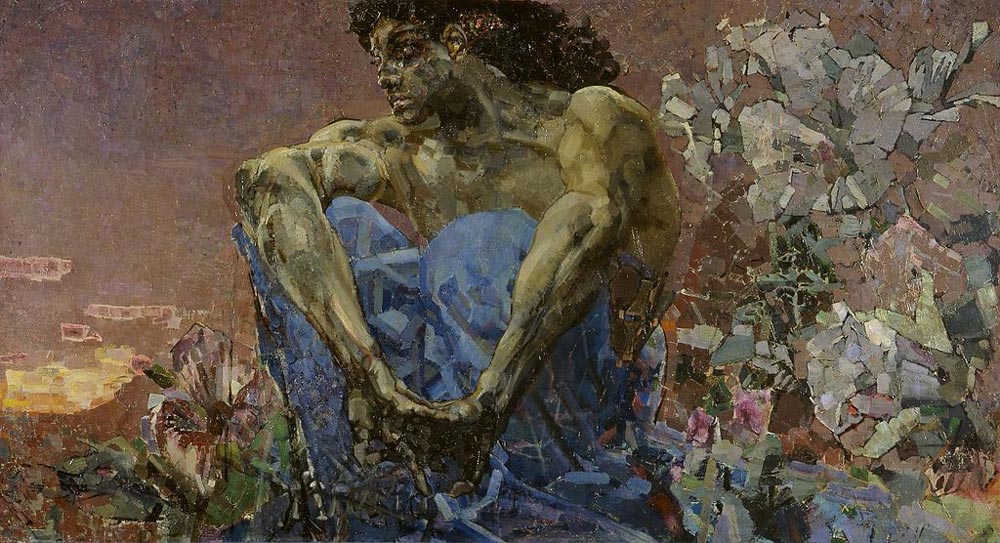| Mikhail Vrubel | |
|---|---|
 |
|
| Born | Mar. 5, 1856 Omsk, Siberia |
| Died | Apr. 1, 1910 (at age 54) Saint Petersburg |
| Nationality | Russian |
| Movement | Symbolism |
| Field | Painting |
| Works | View Complete Works |
Mikhail Vrubel (1856-1910) was a Russian artist who is often considered the founder of that country’s Art Nouveau movement. The man himself, however, eschewed any particular description and in his lifetime he was sometimes seen as remaining above mere labeling. He passed through periods of both acclaim and disfavor during his life, but in due course his paintings became seen as an important part of Russian artistic culture.
Personal Life
Vrubel was brought up by his father alone, since his mother had died when he was three years old. The trajectory of his early life suggested that Vrubel would become a lawyer like his father. He went to the University of St. Petersburg to study law, but on finishing his studies in 1880, he was admitted to the Academy of Arts. Vrubel’s time at the Academy was a happy one. He met his wife, opera singer Nadezhda Zabela, in 1896 and after marrying, they moved to Moscow. In his last years, Vrubel suffered from mental illness and deteriorating sight and had to give up painting before his death in 1910.
Significant Works
 Vrubel became a significant figure in the Russian art world in 1890, when he produced his large painting, Demon Seated in a Garden. This picture was castigated by some critics as hideous, with one commentator going so far as to accuse Vrubel of achieving nothing but “wild ugliness” in the piece. Although controversial, the painting did also attract considerable praise; Savva Mamontov, a prominent patron of the arts of the time, was so impressed by Vrubel’s “fascinating symphonies” that he openly called the painter a genius and hired him to paint the interior of his and his friends’ mansions.
Vrubel became a significant figure in the Russian art world in 1890, when he produced his large painting, Demon Seated in a Garden. This picture was castigated by some critics as hideous, with one commentator going so far as to accuse Vrubel of achieving nothing but “wild ugliness” in the piece. Although controversial, the painting did also attract considerable praise; Savva Mamontov, a prominent patron of the arts of the time, was so impressed by Vrubel’s “fascinating symphonies” that he openly called the painter a genius and hired him to paint the interior of his and his friends’ mansions.
Many of Vrubel’s most famous works were painted during the years he spent in Moscow with his wife. A number of these were based on fairy stories and folk tales from the Russian tradition. The first of these was Pan in 1899, which was followed by Lilacs and The Swan Princess the following year. In 1901, Vrubel painted the imposing Demon Downcast, repainting the demon’s face a number of times even after the painting had been unveiled to the public. The decline in his health prevented him from continuing his work at such a pace, though he did produce further paintings on a more mystical theme, such as 1904’s Pearl Oyster.
Artistic Style and Techniques
 Vrubel’s paintings contained a distinctive, idiosyncratic style from his earliest days. He was highly skilled at not only drawing but also a number of other artistic endeavors. These included ceramics, stained glass, and even the production of theatrical costumes and stage sets. In his later years, he preferred to use what he referred to as his “unfinished touch” in fragmentary composition. Vrubel initially used rather subdued tones, but after his work on murals in Kiev’s St. Cyril’s Church in the 1880s, he modified his style somewhat to include bolder and more saturated colors.
Vrubel’s paintings contained a distinctive, idiosyncratic style from his earliest days. He was highly skilled at not only drawing but also a number of other artistic endeavors. These included ceramics, stained glass, and even the production of theatrical costumes and stage sets. In his later years, he preferred to use what he referred to as his “unfinished touch” in fragmentary composition. Vrubel initially used rather subdued tones, but after his work on murals in Kiev’s St. Cyril’s Church in the 1880s, he modified his style somewhat to include bolder and more saturated colors.
Vrubel was particularly interested in the process of creation, sometimes neglecting the finished artworks as a result. Because of this, a number of his early paintings have not survived and even some of his later works have deteriorated markedly. Demon Seated in a Garden is among the most prominent of these: Vrubel wanted to give his piece a glistening, luminous appearance, accomplishing this by mixing small flakes of bronze with his oils. As the years have gone by, so the bronze has faded, dulling the painting’s originally startling visual impact.